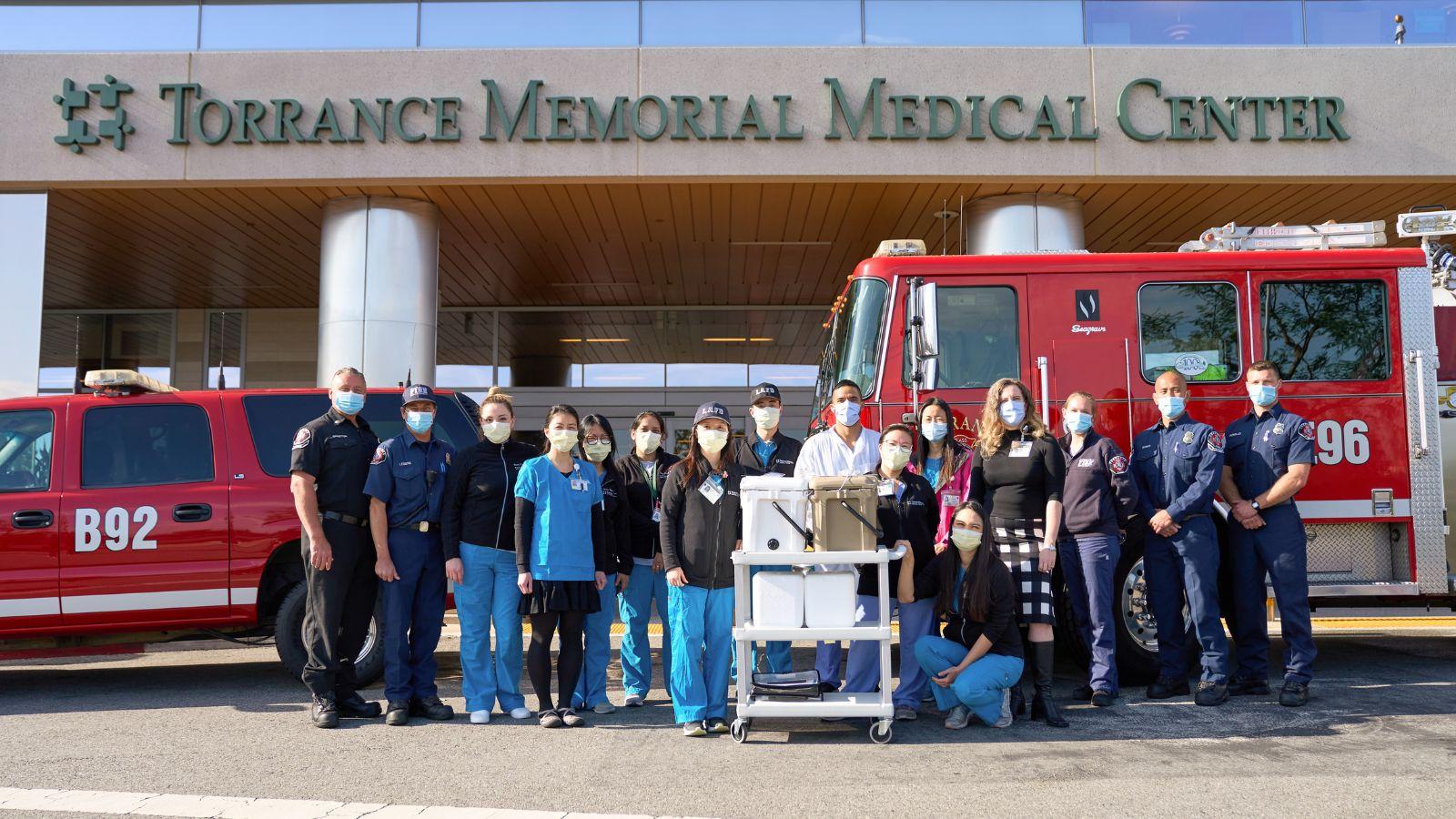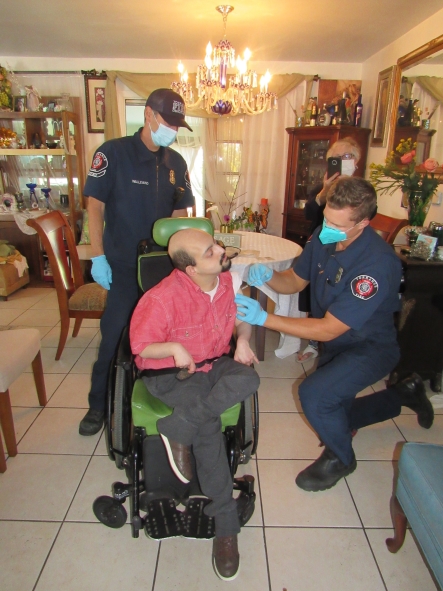
Written by Nancy Sokoler Steiner
Olga Farah grew increasingly frustrated. She needed to find a place that would vaccinate her adult son, Alex. But Alex has severe developmental disabilities and the mental capacity of an infant. He simply could not keep a mask on. Every vaccine site Farah contacted refused to take someone without a mask.
She kept trying. When Farah reached Torrance Memorial Medical Center’s vaccine hotline, she learned the hospital was just launching a program in collaboration with the Torrance Fire Department. The program would take vaccines to medically frail community members who were most at risk for COVID-19 and unable to travel to vaccine sites.
Days later, a fire truck arrived at the Farah residence. Torrance firefighters asked vaccine screening questions, administered the vaccine and stayed afterward to make sure Alex had no adverse reaction.
“They were heaven-sent,” says Farah. “I spent 14 months as a prisoner at home. It wasn’t just to protect my health but because I was so worried about Alex getting COVID-19. When he gets a cold, it can last two to three months. I knew if I brought the virus home, it would probably kill him.”
Making It Possible
Alex’s vaccination came about thanks to a laborious behind-the-scenes process undertaken by Torrance Memorial and the Torrance Fire Department. “The hardest part was finding and reaching those most in need,” says senior care pharmacist Mei Tsai, who spearheaded the medical center’s participation.
She and her team reached out to those on a list provided by the L.A. County Department of Health Services. They also contacted home health organizations, physicians’ offices and the regional center to identify other potential candidates. The fire department contacted Meals on Wheels and the Bartlett Senior Center and created a homebound vaccine hotline.
Health education manager Catherine Hargrove and her team then registered patients who had been identified, verifying eligibility and noting any special needs. This way the fire crew would be prepared for situations ranging from knowing which patients to monitor for allergic reactions to having gate codes necessary to enter apartment buildings.
Vaccination day logistics needed to be smooth and efficient since vaccines require administering within six hours. Assistant director of pharmacy Tammy Ginder sorted patients geographically and created a map and route for the fire department teams to follow.

Above: Alex Farah is happy to receive the vaccine from the Torrance Fire Department.
On vaccination day, two teams set out to vaccinate six patients each—armed with the map, coolers equipped to keep the vaccines at proper temperatures (between 2º and 25º, depending on the manufacturer) and digital trackers that monitored cooler temperatures. Before every outing, Tsai or another pharmacist briefed fire department personnel on cooler and syringe instructions and patient special needs. They also debriefed the teams afterward and handled the processing of all paperwork.
The homebound vaccine program launched on March 26 and delivered 145 vaccinations through the end of April. Because brushfire season starts in May, the Torrance Fire Department stepped back at that point and Torrance Memorial took over the process of delivering vaccines in Torrance and neighboring communities.
“This was a heartfelt effort with a lot of groups making it possible: Home Health, the Transitional Care Unit, our team of pharmacists, and our managers and leaders,” says Tsai. “I couldn’t be prouder to work at Torrance Memorial, which supports keeping the community’s most frail residents safe and healthy.”
“Firefighters have seen a lot, but this was different,” says deputy chief Jon Henderson, who coordinated the strategic planning and logistics for the Torrance Fire Department. (Fire captain Duane Sweeton ran the day-to-day operations once the program was underway.) “There were a lot of tears shed not only by the patients but by the firefighters as well,” Henderson recalls about vaccine recipients reacting to the prospect of finally reuniting with family and friends. “I think they rediscovered their purpose.” •






